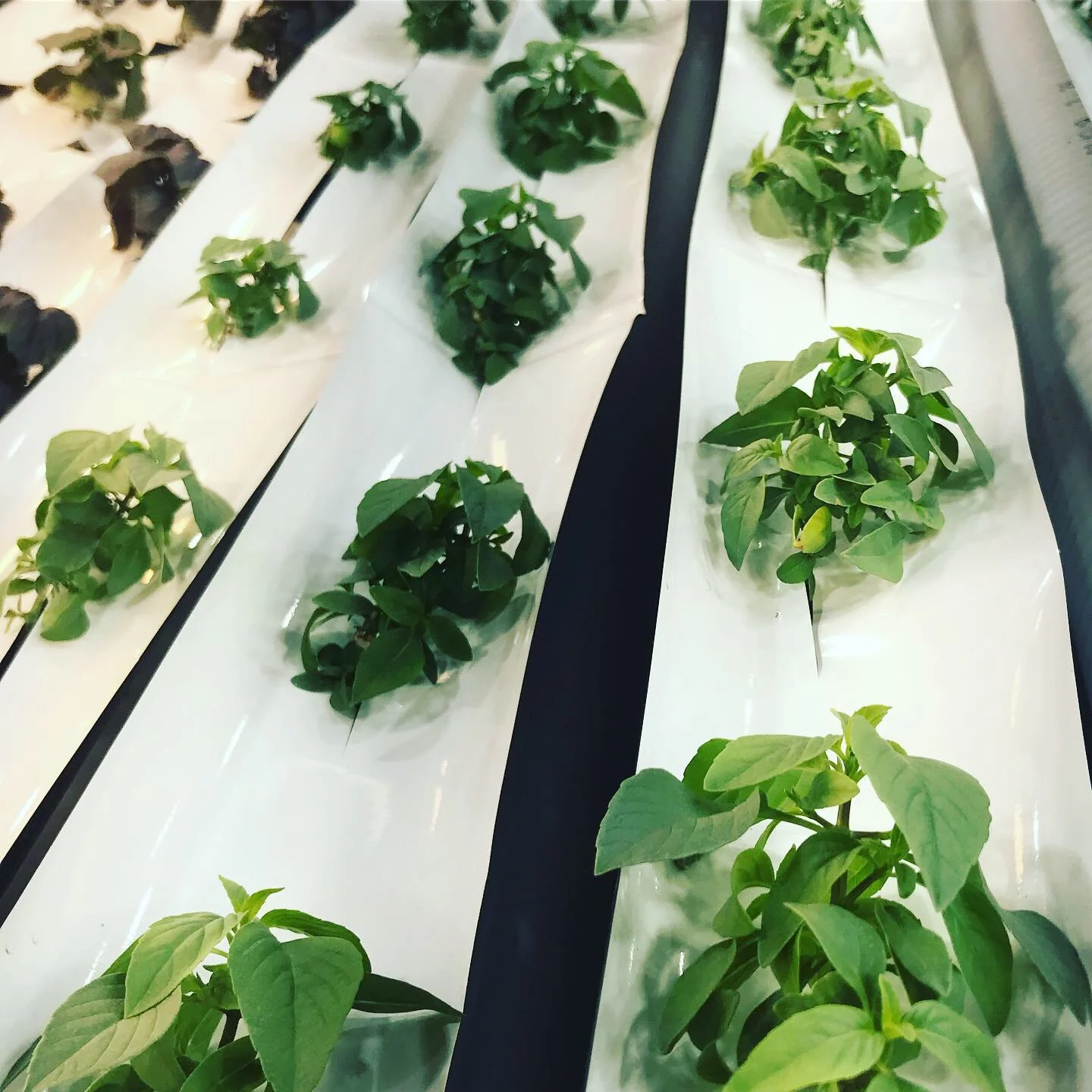Sep 30, 2019
A Hydroponics Startup Growing Basil Is Developing Their Own LED Technology

In this exclusive interview, Agritecture spoke with Olivia Engel of St. Louis Indoor Produce (SLIP), a hydroponics start-up growing basil in the heart of the city. We learned about a new lighting technology they are developing that allows farmers to capture their lights’ heat and vent it in or out as climate control, and the cooler lights perform at a higher efficiency.
AGR: Can you give us a bit of background on the local food initiatives in St. Louis?
Missouri has historically been a fertile place for diverse farming. But as industrial mono-crop agriculture has taken over, our farmers — and the variety of crops they produced — have been increasingly pinched. Our Midwestern cultural attitudes around food also limit what we’re able to find in the grocery store or on our plates at a restaurant.
Over the past decade in particular, though, hard-working, passionate people in the St. Louis region have made a real difference in food. When I launched the Green Dining Alliance from its pilot phase in 2012, there was a handful of restaurants serving locally-grown or raised food. But now, St. Louis has almost a hundred restaurants who proudly serve local and thriving farmers markets, as well as local grocers, bakeries, and even nose-to-tail butchers making a steady come-back.
A lot of this is due to businesses who started championing local food before it was cool, like the Baileys’ Restaurants, as well as non-profit organizations like EarthDance Farms, Green Dining Alliance, and the St. Louis Food Policy Coalition.
Can you tell us about SLIP and how it got started?
St. Louis Indoor Produce (SLIP) started in 2017 as a partnership between Venkat Papolu and Matt Mcwilliams, now CEO and CTO, which Venkat often describes as “two guys growing vegetables in a basement, in the hopes of improving indoor agricultural methods and increasing fresh food in St. Louis.”

As of spring of 2019, local foundation Justine PETERSON (JP) invested in SLIP, which enabled us to expand our team and launch a commercial farm in St. Louis’ new incubator space. The timing was right — JP was about to open their revitalization project, the Greencubator, and when Venkat pitched SLIP as one of the first businesses for the space, they funded us to make it happen.
We have experience with a number of crops, but right now we’re focused on basil and selling to local grocery stores and a few key restaurants that showcase local farmers. It’s a joy to grow, it sells at a higher margin, and of course, it’s super nutritious and flavorful! With herbs’ short shelf life, we can offer it as fresh as it comes, year-round. Other local farms will shut down in the fall until March or April. But growing indoors, we’re farming 12 months out of the year.
Can you tell us more about the technology used in SLIP Farm’s hydroponics operation?
Our team has experience with numerous systems — everything from DIY-style custom designs to running a Freight Farm — and so our new farm is a SLIP-unique design, bringing all our expertise together. We’ve almost entirely eliminated PVC, and we have an innovative sump gutter system combined with leaning vertical towers that no one has tried at this scale. Automation is key, and we’ll only be adding more as the farm progresses. We see this as our test farm, where we get everything water-tight before ramping up to an even larger scale.
We’re also developing our own, patent-pending lighting system with liquid-cooled LEDs that are more powerful and efficient than the industry standard. This lighting technology allows farmers to capture their lights’ heat and vent it in or out as climate control, and the cooler lights perform at a higher efficiency. Additionally, our custom optics emit better PAR for vertical systems: one light bar, mounted horizontally on the ceiling, will cast light evenly down a tower, so farmers will no longer need vertical light boards or strip lighting that stands in the way of their crops.

Where would you like to see SLIP Farm, and maybe the VF industry in general, move towards in the next 5 years?
Indoor urban farming can be an integral, intersectional solution to many complex issues. In the next five years, SLIP’s systems will fill more empty buildings with food, create more jobs, produce more nutrition, and save water in the process. When we farm indoors, we cut out pesticides and aren’t hindered by the unpredictable, changing climate. Over time, as more large-scale food production moves inside, our region could re-wild large portions of the ecosystems destroyed by industrial agriculture, which would sequester carbon, rebuild lost soil, and much more.
Speaking personally, I want so badly to see my city full of flavorful, fresh nutrition, especially in neighborhoods where, right now, you can’t find a grocery store for miles. I’ve seen a lot of visions of the apocalypse in books and movies, and frankly, I’m over it! I’m envisioning a better future. We have everything we need — we just need to put the energy and resources into making it happen.
For more updates follow @slip.farm on Instagram!
Further Reading
EXCLUSIVE INTERVIEW WITH TOBIAS PEGGS OF SQUARE ROOTS
THIS INDOOR GARDEN USES BIOMIMICRY TO CREATE A HIGH-YIELD SOLUTION
